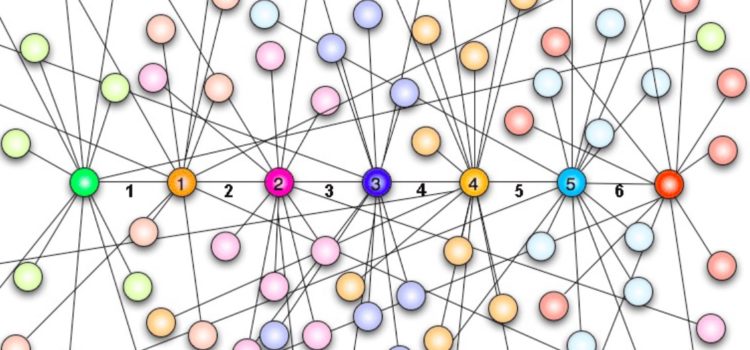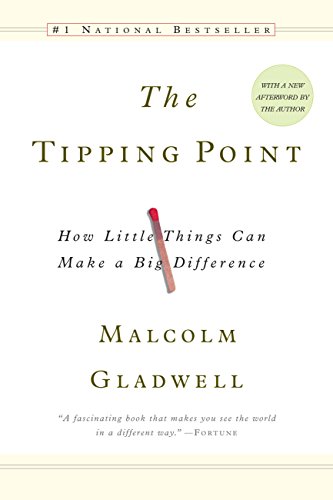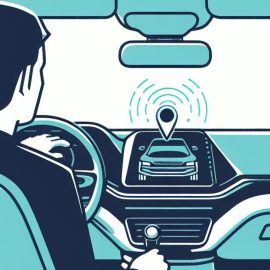

This article is an excerpt from the Shortform summary of "The Tipping Point" by Malcolm Gladwell. Shortform has the world's best summaries of books you should be reading.
Like this article? Sign up for a free trial here .
What is the “six degrees of separation” theory? What does it say about how we’re connected? What is a 6 degrees of separation example?
The six degrees of separation theory is the idea that every person in the world is connected to every other person in the world by a chain of family members, friends, or acquaintances that number no more than 5 people. The idea was popularized by the game “Six Degrees of Kevin Bacon.”
We’ll cover the origins of the “six degrees of separation” theory, look at a 6-degrees-of-separation example, and see how the theory is connected to Malcolm Gladwell’s idea of “connectors.”
The “Six Degrees of Separation” Theory
How do you spark a trend that spreads like wildfire, or turn a product into the latest must-have item? You create a social epidemic. Social epidemics are aided by the “six degrees of separation” theory. The Tipping Point explains how social epidemics — spreading ideas, messages, behaviors, and products — function like viruses, growing gradually until they reach a critical mass (the tipping point) and explode.
6 Degrees of Separation
The “six degrees of separation” theory starts with Stanley Milgram. In the 1960s, psychologist Stanley Milgram conducted the “small-world experiment” to research how closely people are connected. He sent letters to 160 people in Nebraska, giving them the name and address of a stockbroker in Boston and instructing them to write their name on the letter and then send it to a friend or acquaintance who might get the letter one step closer to that stockbroker. Each person who received the chain letter would do the same, until a friend or acquaintance of the stockbroker finally received it and would send it directly to him.
Six degrees of separation meaning: At the end of the experiment, Milgram found that most of the letters reached the stockbroker in five or six steps, creating the concept that people all over the world are all connected by six degrees of separation.
Even further, Milgram discovered that half of the letters were ultimately delivered to the stockbroker by three people. Although everyone is linked by just six degrees of separation, a small group of people are connected to a disproportionately large number of people. Those few, well-connected people are the Connectors.
Connectors: People With Strong Social Networks
Connectors are people who seem to know everyone. You can find Connectors in every walk of life. Connectors are sociable, gregarious, and are naturally skilled at making — and keeping in contact with — friends and acquaintances. To understand the special power of connectors, we need to understand the “six degrees of separation” theory and the profound connectedness of us all.
Connectors tend to be connected to many communities — whether through interests and hobbies, jobs that cause them to work with people in other fields, or other experiences. Their strength is in occupying many different worlds, and bringing them together. Connectors have fewer than six degrees of separation. They may have 2 or 3 degrees of separation.
However, Connectors are not close with all their connections. In fact, Connectors’ power is in having lots of acquaintances, or “weak ties.” Your acquaintances typically have different social circles and communities — exposing them to different people and information — than you, whereas your friends’ knowledge and social ties tend to largely overlap with your own. Thus, your friends can help spread a message in the same communities you occupy, but weak ties can help spread that message beyond your reach because they belong to different worlds than you do.
For this reason, weak ties are more valuable than close friends in creating a wider reach for spreading epidemics, and Connectors are the hubs at the center of all those worlds.
(Shortform note: The notion that a handful of powerful people can spread a message further and more effectively than the rest of the population, as detailed in the “six degrees of separation” theory, is called the Influentials theory, and has been a staple in marketing for 50 years. However, several more recent experiments by network-theory scientist Duncan Watts determine that these rare trendsetters — or hubs, in his experiment — are no more influential in spreading an idea than the rest of the population. Watts recreated Milgram’s small-world experiment with email and found that only 5 percent of messages passed through Connectors. Additionally, Watts has found that the public’s mood and susceptibility to influence at a given time is a far greater determinant of whether an epidemic tips than the strength of the influencer spreading the idea.)
6 Degrees of Separation Example
A party game called “Six Degrees of Kevin Bacon” attempts to link Hollywood actors through their movie roles the way Milgram’s small-world experiment linked people through letters. It’s a demonstration of the “six degrees of separation” theory. You start with a random actor, then name another actor from one of her movies, then name an actor who has been in a movie with that second actor, and continue until you get to someone who’s shared the screen with Bacon — trying to make the connection in six steps or less. For instance, you can get from Mary Pickford to Bacon in three steps because she was in Screen Snapshots with Clark Gable, who played in Combat America with Tony Romano, who was in Starting Over with Bacon.
The game works because Bacon had roles in so many movies. However, when a computer scientist calculated the connectedness of about a quarter million actors who have appeared on TV and in movies, he found that the most well-connected actor was actually Rod Steiger. You could connect any actor with Steiger in less than three steps because not only because he had roles in a lot of movies, but also because the movies were so wide ranging — from dramas to Westerns, and Oscar winners to flops. Within Hollywood, Steiger occupied many worlds, and in those many diverse circles he accumulated a huge number of connections. The “six degrees of separation” theory applies to most of us, but the most connected among us have fewer degrees of separation.
———End of Preview———

Like what you just read? Read the rest of the world's best summary of "The Tipping Point" at Shortform . Learn the book's critical concepts in 20 minutes or less .
Here's what you'll find in our full Tipping Point summary :
- What makes some movements tip into social epidemics
- The 3 key types of people you need on your side
- How to cause tipping points in business and life







Brilliant…..well said Amand Penn !
K.P. Mack
My mother met the famous western actor Tom Mix, who knew Wyatt Earp who was good friends with Doc Holliday.
My sister worked with Howard Kaye who was a cousin of Danny Kaye the famous actor who was good friends with Princess Margaret who was the sister of Queen Elizabeth.#